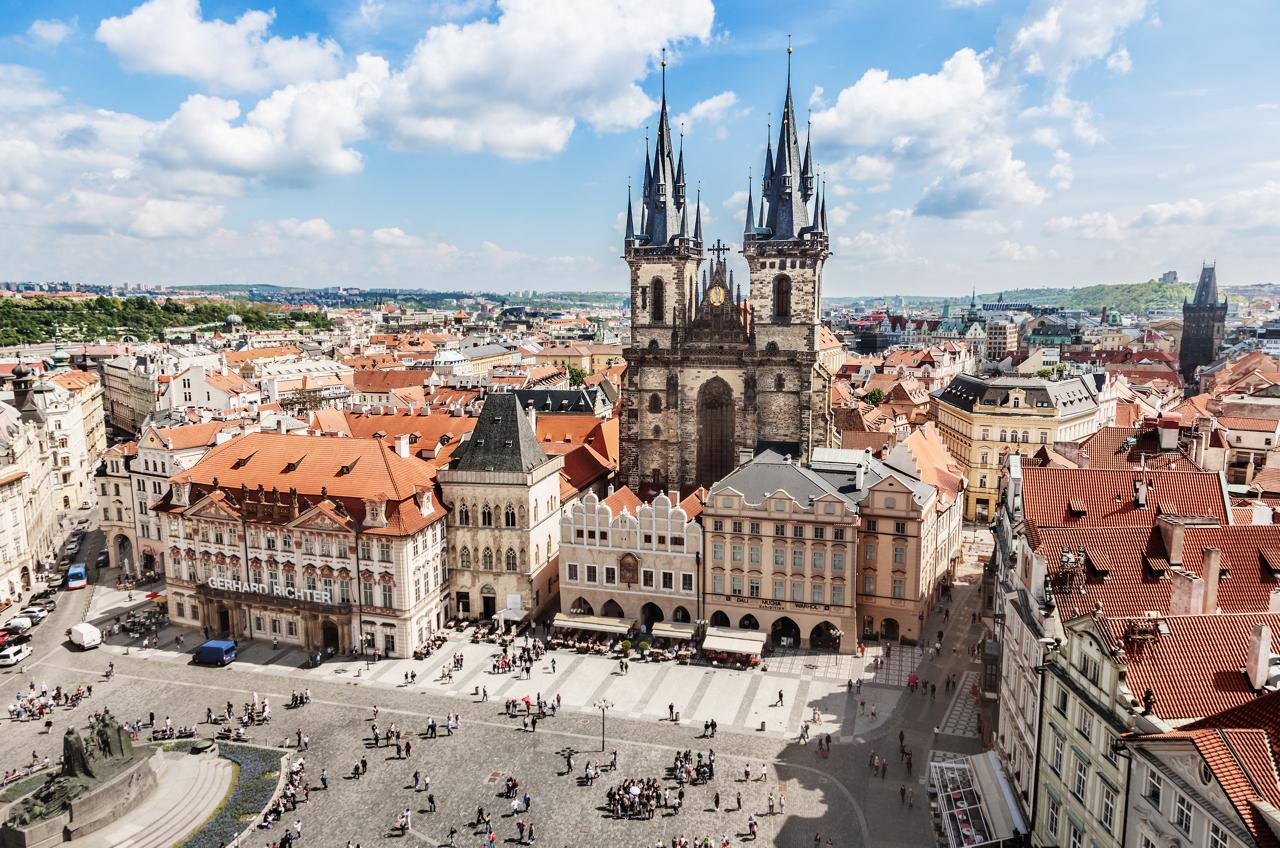
Prague’s exquisitely preserved architecture underpins an intriguing city packed with history and charm

Prague’s exquisitely preserved architecture underpins an intriguing city packed with history and charm
Hyperbole has found a comfortable home in the travel industry. Countless beaches have been credited with the world’s whitest sand; ‘hidden treasures’ have often been long found; and the best coffee, as Victorians proudly know, is made in Melbourne (but also Seattle, Rome, Vienna et al).
In Prague, the most beautiful city in Europe (among others, obviously), they’ve taken a different tack. An enchanting blend of history and character, Prague is known as the City of 100 Spires, thanks to the many steeples, towers and turrets that pierce the skyline with both strength and grace. Romantic as it is, the figure no longer does the Czech capital justice. There may well have been 100 spires, or 103 as counted by 19th-century mathematician Bernard Bolzano, once upon a time. But a lot has happened since his tally and today there are said to be at least five times as many, making it a sight even more spectacular than the moniker would suggest.
Forget hyperbole. Prague has mastered the understatement, and it only adds to my delight.
I am here for just a few days, but my stay isn’t rushed. This isn’t an overwhelming city; it’s perfectly composed for meandering, day or night, with major attractions, such as Charles Bridge, Prague Castle and Old Town Square, an easy stroll apart.
At almost 201 centimetres tall, I am not accustomed to looking up at much, but in Prague it is a different story. The city’s centuries-old architecture, covering myriad styles including Gothic, Renaissance and Baroque, is nothing short of spectacular and blindly navigating the cobblestones is a small price to pay to admire the view a little longer.
Despite a turbulent political history, Prague has been beautifully, and miraculously, preserved. In fact, its 866-hectare centre was UNESCO World Heritage-listed in 1992. In Old Town Square, the Church of Our Lady Before Tyn is a powerful example of Gothic architecture and the nearby astronomical clock, installed in 1410 and the oldest of its kind in the world, is a masterpiece. Crowds can build to uncomfortable sizes around Prague’s more famous attractions, such as these, particularly across summer, but can often be avoided with an early start.
It’s not difficult to ‘catch the worm’ when you’re staying so close to the action. Perched on the Vltava River, the Four Seasons is steps from Charles Bridge while Old Town Square, complete with its enchanting labyrinth of alleyways, is just around the corner. Prague Castle, St Nicholas Church and Parizska Street’s shopping gems are also within walking distance.
Not surprisingly, the Four Seasons’ building itself is also quite an architectural feat, combining three historic structures – classical, Renaissance and 18th-century Baroque – with a fourth modern one with seeming ease. Inside, rooms vary in style but all feature sumptuous furnishings and excellent views. I dine for lunch at in-house restaurant CottoCrudo, indulging first in the live bar, brimming with fresh seafood, before ordering from the traditional Italian menu. It is a first-class dining experience, but not as memorable as another meal I enjoy courtesy of the hotel.
A picnic basket full of moreish goodies, including a bottle of prosecco, is pre-packed by hotel staff and joins me on board a Four Seasons private boat ride. Floating gently under bridges, including the star of the show, Charles, this charming journey offers a different perspective and I am lulled by Prague’s beauty once again. Stefan, our captain and guide, shares tales of Prague, past and present, and his selection of classical Czech music tops off an idyllic afternoon.
The relaxation continues in the hotel spa where a full-body massage is just the tonic. I am ready for another wander, and I am in the perfect place.
Latest Articles
Don't miss the latest from Luxury Travel
